Vermicomposting describes feeding worms food and kitchen scraps, and then harvesting their worm poop, called worm castings, for use as compost. While in a traditional sense, it is not compost, worm castings are a highly nutritious plant feed and can be used in the same way as finished compost.
If you are just starting with vermicomposting, you may be wondering if you can just dig some worms out of your backyard to use in your worm compost bin. While this might be true, there are many worm species and some are more desirable for vermicomposting than others.
Some outdoor worm compost bins allow the worms to move freely from the compost into the ground and back. Traditional open-air composting relies on numerous organisms – including many different types of worms – to make the finished product.
When using an enclosed vermicomposting bin, some worms will be more suitable than others. In this article, I will take you through the various types of worms and which ones you should buy (or find) to get the most out of your little wrigglers.
- Learn more about the main types of composting methods.
Vermicompost Worms Overview
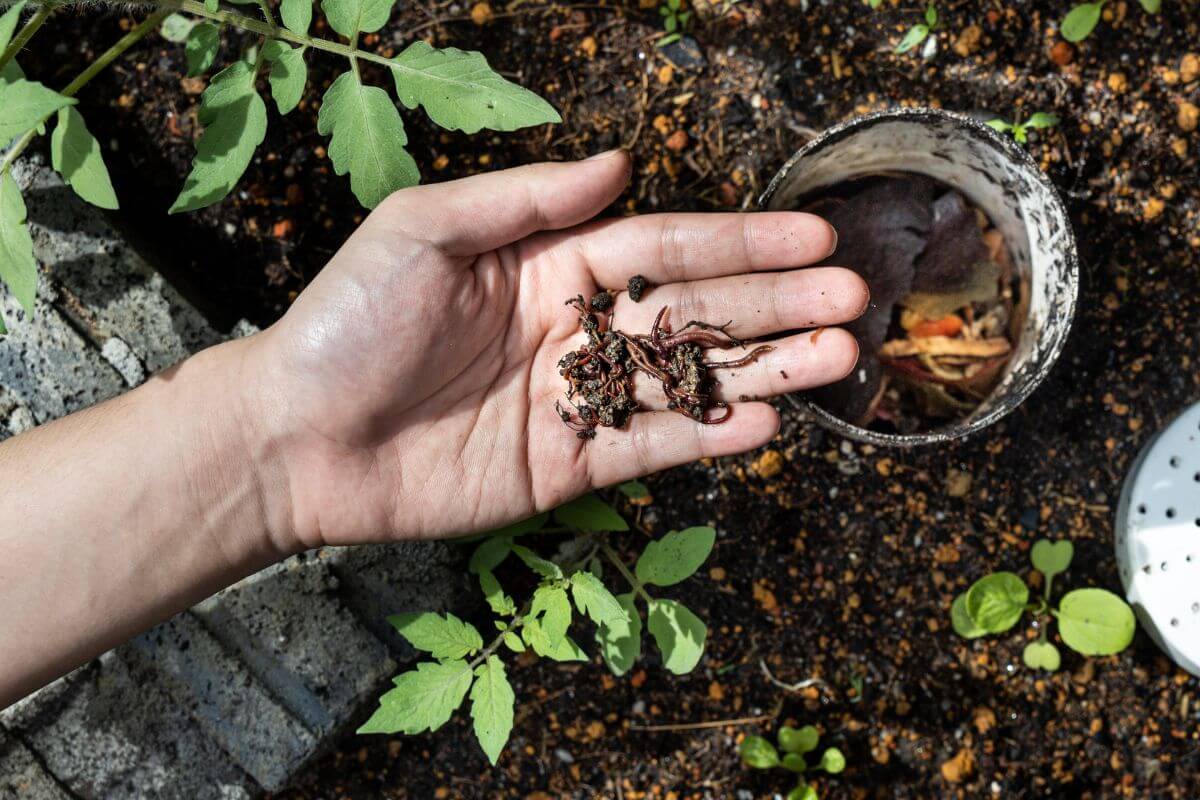
There are 182 species of earthworm in North America, so it’s important to know what you’re looking for when vermicomposting.
That statement is especially true when you consider that 30% of the species are not native and have been introduced through imported plants and fishing bait. While native earthworm species are advantageous, non-native earthworms can be invasive and threaten the balance of your local ecosystem.
If you are open-air composting, the chances are you will have numerous types of worms aiding your compost. However, if you have a worm composter with limited space, you’ll want your worms to be pulling their weight through the food scraps.
Here are the best worms for vermicomposting.
Best Worms for Vermicompost
1. Red Wigglers (Eisenia fetida)
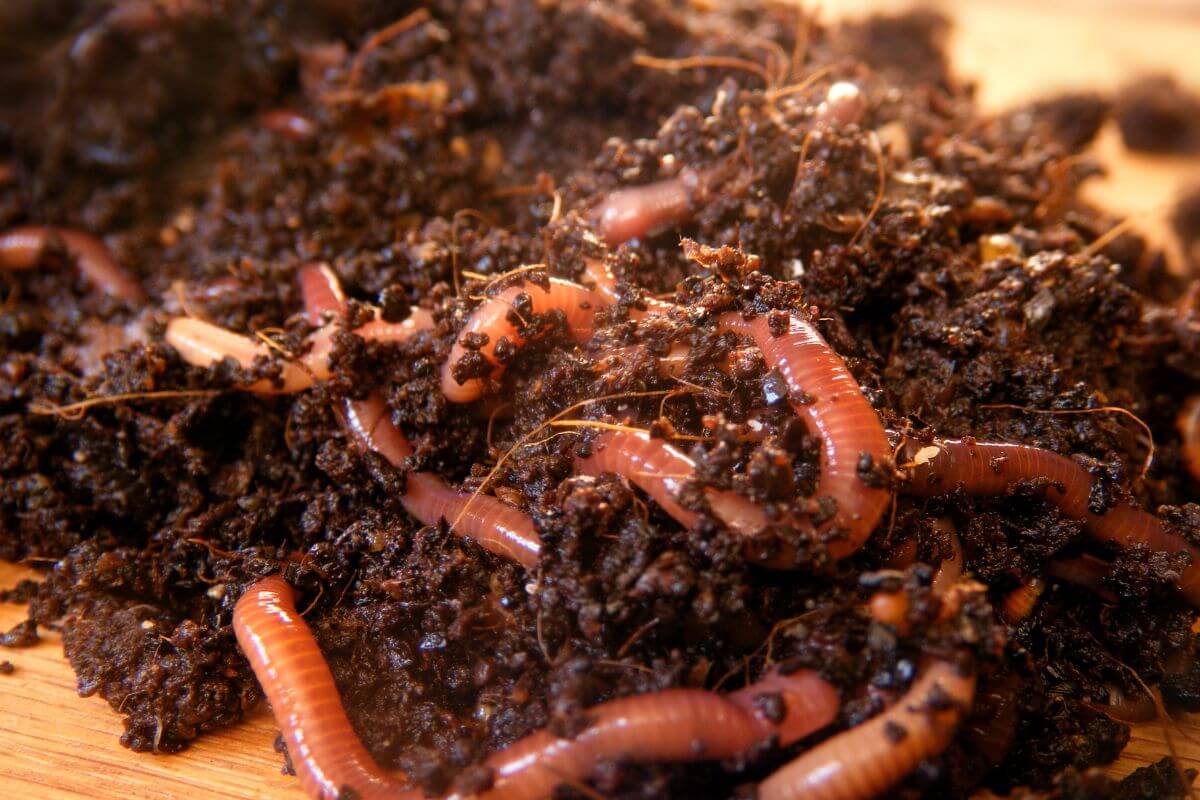
The Red Wiggler species is usually the one recommended for most indoor worm compost bins. They are also known as manure, branding, panfish, trout, or tiger worms.
They are rarely found deep in the soil, so you won’t find them burrowing. As they are epigeic, they only live in the upper layer of rich organic matter, and this trait makes them perfectly suited to worm composters.
They are usually pretty small, reddish-brown with a yellowish tail, and have small rings around their bodies. Although they are native to Europe, they are now found on every continent except Antarctica.
Red Wrigglers are well known for being the most prolific at making castings and can eat up to half its weight of organic matter every day. They quickly break the organic matter down into high-quality compost faster than any other worm.
They are so desirable for worm compost bins that most worm composters are designed specifically for this type of worm. These worms are readily available to buy online.
Red Wigglers also reproduce quickly, so you’ll be able to add more organic waste over time, because you’ll have more worms. They are also more flexible with the temperature range they do well in, 55-90°F.
2. Redworms (Lumbricus rubellus)
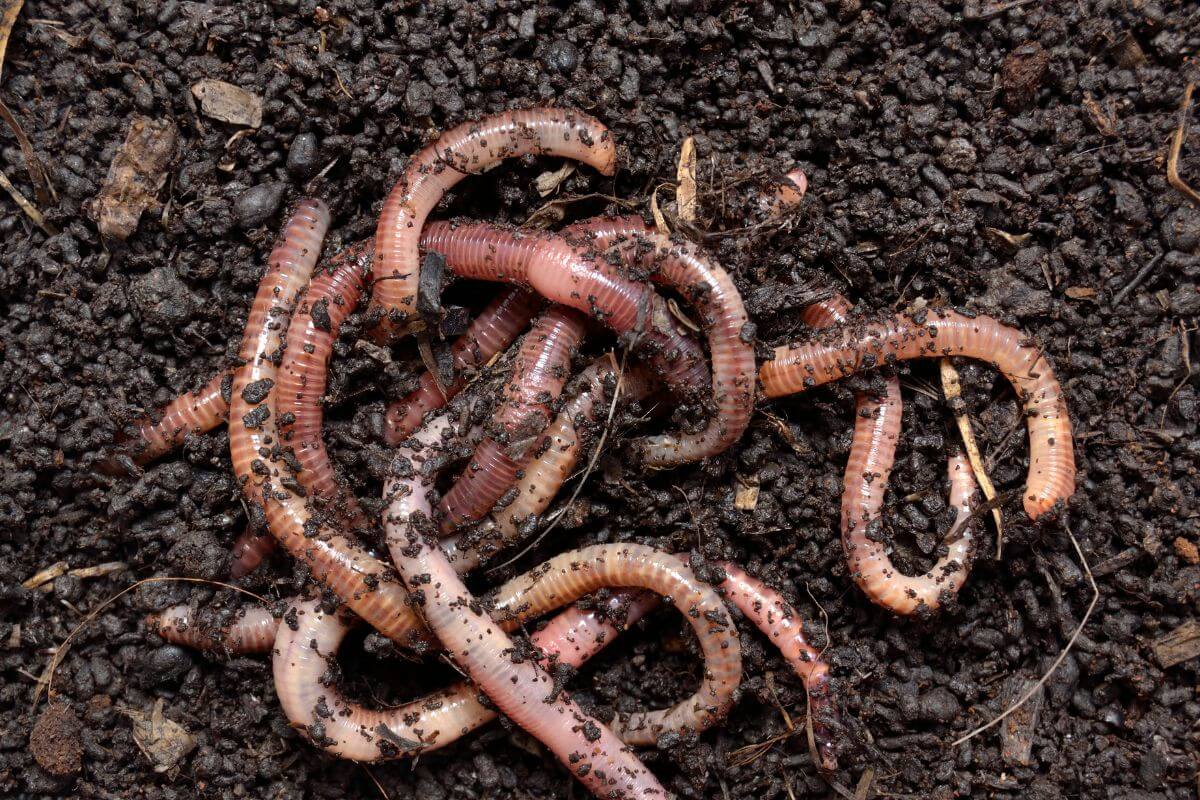
Otherwise known as the red earthworm, Redworms are also epigeic, making them suited to worm composters.
In the wild, redworms do prefer dung and feces over food waste. These redworms are a little fussier when it comes to pH balance, soil composition, and temperature than the Red Wiggler, which is why Red Wigglers are more popular in composters.
These worms have reddish semi-transparent skin that is segmented into circular segments. Like the Red Wiggler, they were native to Europe before being spread across the globe, both intentionally and unintentionally.
3. The Blue Worm (Perionyx Excavatus)
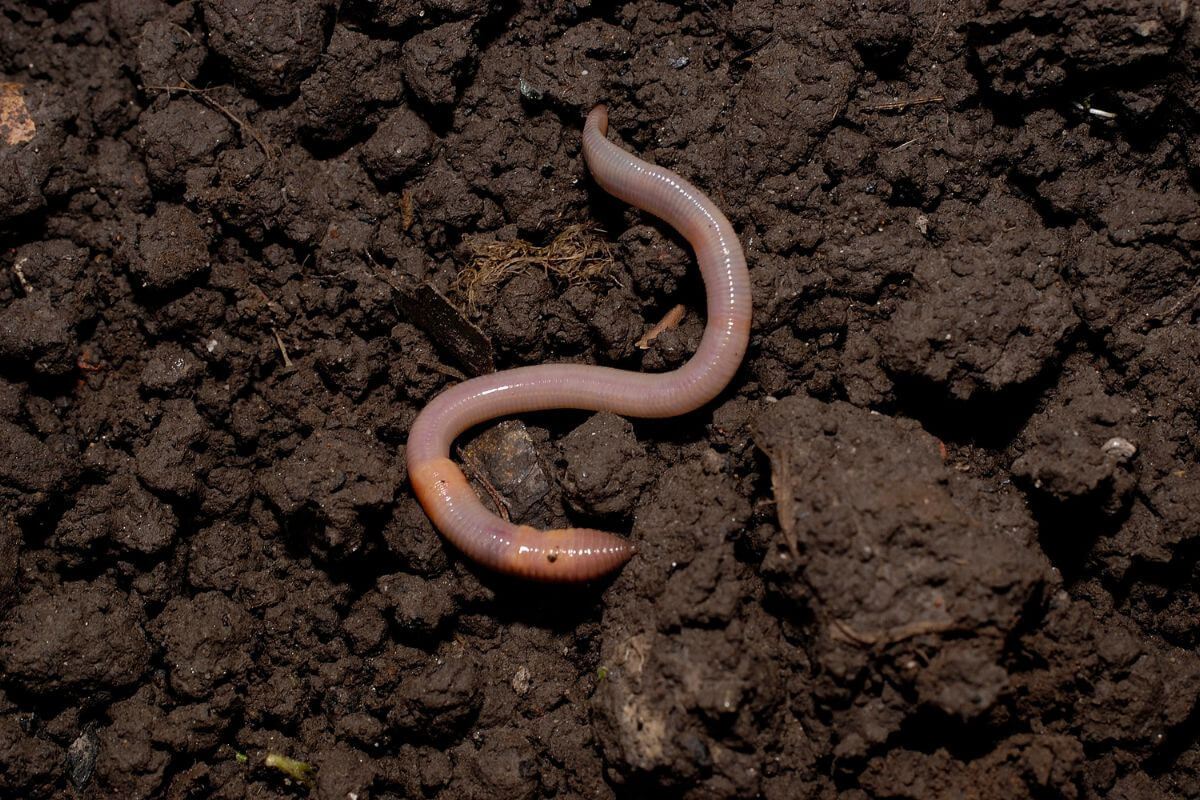
The Blue Worm is native to the tropical areas of Asia and is also known as the Indian Blue Worm.
These blue worms prefer temperatures of 70-80 degrees Fahrenheit, so if you live in an area that has a tropical or subtropical climate, then these worms are perfect for you. Blue worms do not cope well in colder climates, so if you plan to keep your worm bin outside, red worms are far more hardy.
The blue worm is quickly becoming popular for composting purposes as they can create fine worm castings rapidly.
Although called a blue worm, the only real way you can tell the difference between a red or blue worm is that the blues have a less colorful tail – other than that, they look pretty similar.
Blues tend to be more active when handled than reds, and they seem to escape more often (usually when a thunderstorm is imminent.)
4. The African Nightcrawler (Eudrilus eugeniae)
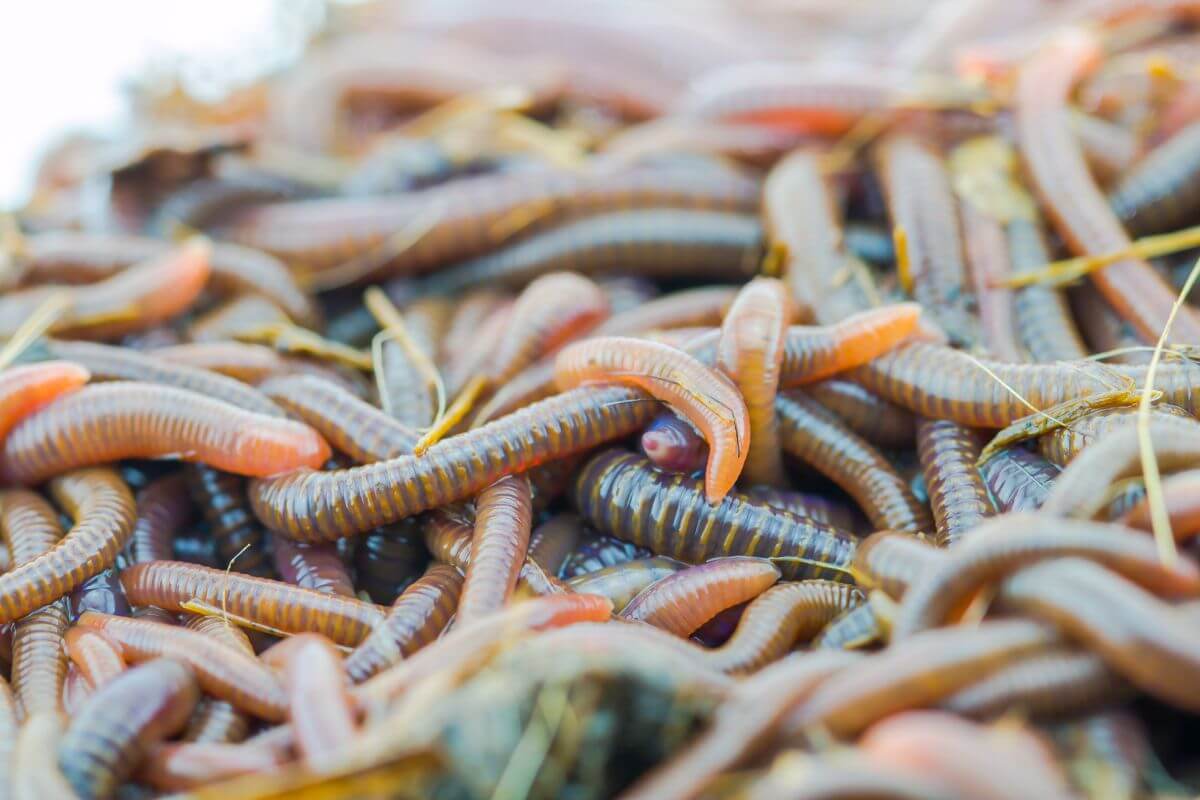
Like the Indian blue, the African Nightcrawler worms are tropical worms that will thrive at higher temperatures, but it is not recommended to keep them in cold temperatures under 45 degrees Fahrenheit. They prefer damp and temperate conditions and are native to tropical West Africa.
These worms are a mix of grey and purple, and in ideal conditions, can eat a staggering 150% of their body weight of waste per day. Obviously, this makes them very desirable in vermicomposting. Most commercial worm farms that sell worm castings use African Nightcrawlers.
However, one thing to keep in mind is that nightcrawlers can grow to be a lot bigger than red wrigglers.
This fact is important, as the stacked tray systems of commercially brought worm composters usually have holes in the trays to allow the worms to migrate upwards. These holes are often designed for Red Wigglers and may not be big enough to let the nightcrawlers through.
Only consider this species if you have a worm compost system that can accommodate these large worms.
5. The Alabama or Georgia Jumper (Amynthas Gracilis)
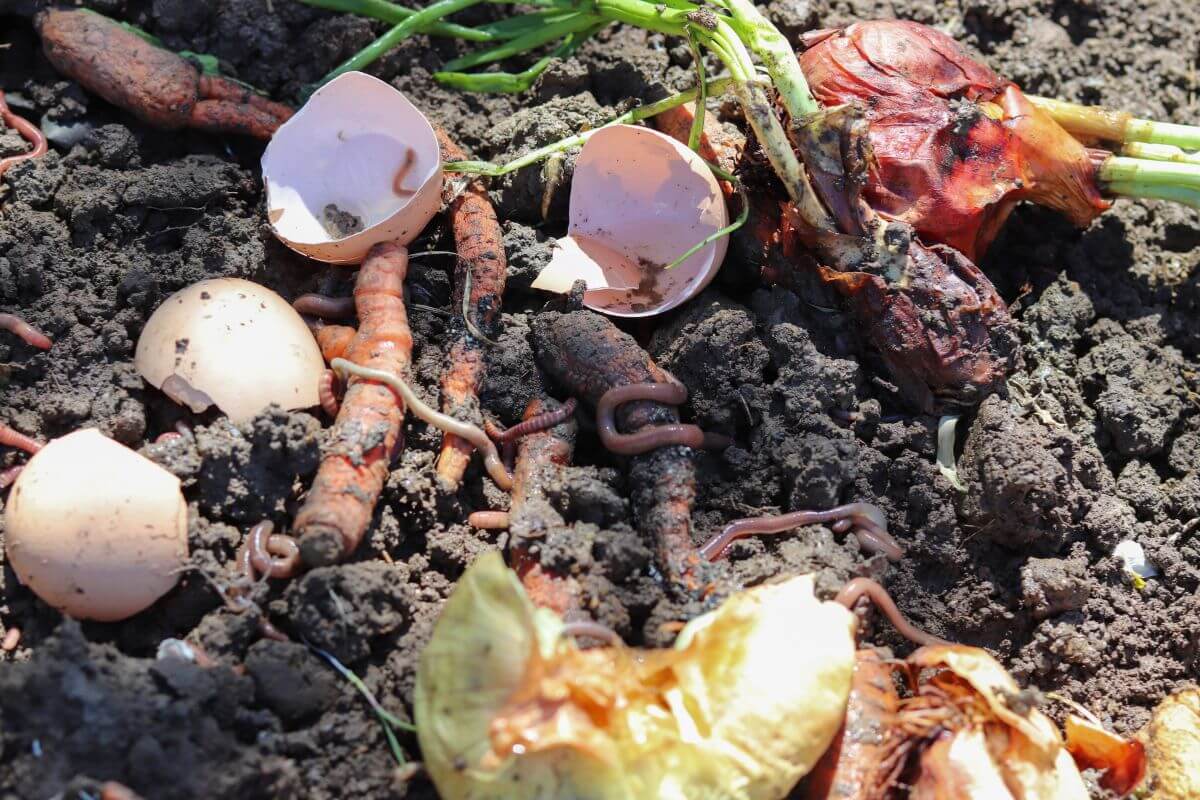
The Jumper Worm species is another tropical worm native to Asia. Also known as the Alabama Jumper, Georgia Jumper, Asian jumpers, garden worms, clay worms, or super reds, this species is now very popular in North America.
Jumper worms are often used for fishing bait, vermicomposting, and soil improvement. They get their name by being able to wriggle so ferociously that they can jump out of your hand!
These worms burrow deep into the soil, although they still feed on the top layer of decomposing matter. This habit makes them less than ideal for enclosed worm composting systems that rely on the worms staying in the top part of the waste to allow you to harvest the worm castings from the bottom.
This species also raises some controversy as The National Park Service feels that any jumpers that make it into the wild pose a threat to the ecosystem as they are an invasive species. Out in the wild, they will eat the food sources for many insects.
How to Choose the Best Worms for Your Compost
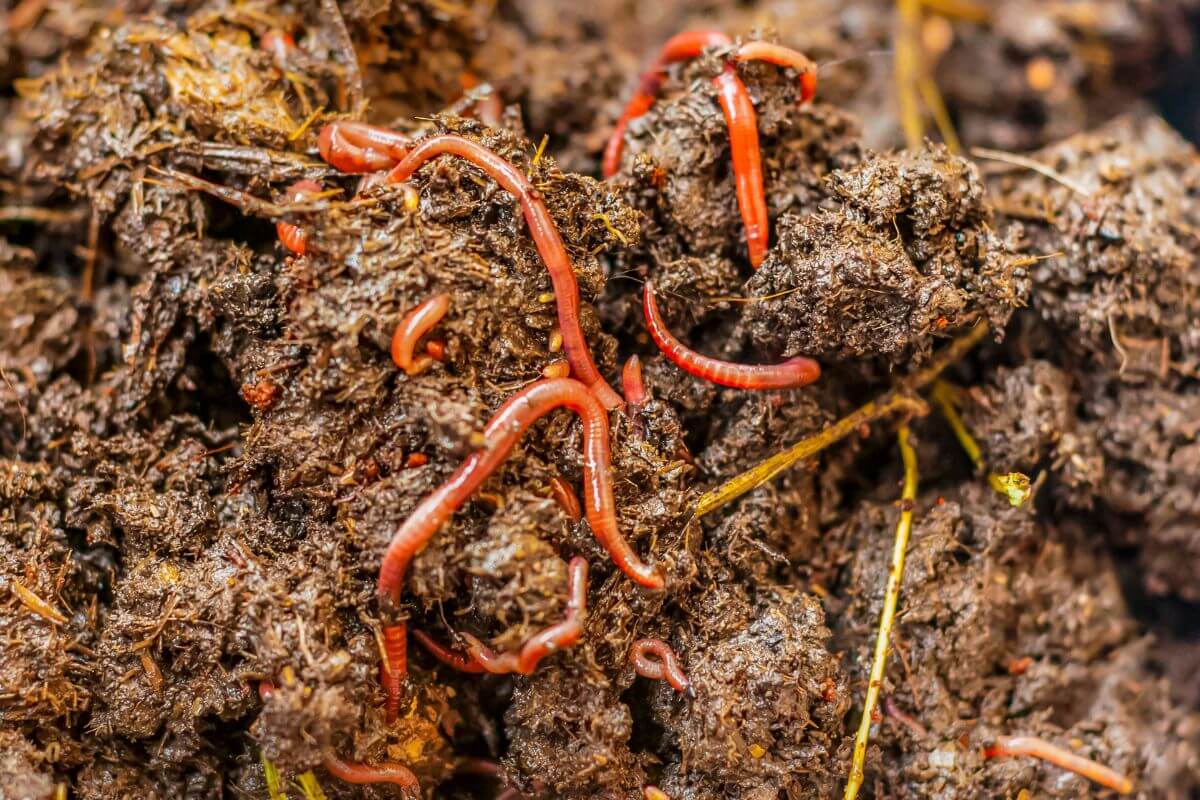
The most important factor is your worm bin when deciding what worms to choose for your vermicomposting.
Most commercially available worm composting bins will recommend which worm to use in conjunction with the system.
If you are vermicomposting outside, you must consider the temperature range that the worms require and how that matches with your area’s climate.
Also, be considerate when introducing an invasive non-native species if there is a possibility that your worms may escape from your compost bins.
Best Worms for Vermicomposting Final Thoughts
Ultimately, whichever worms you choose should be suited to your worm composter and home.
If you are struggling to decide which worm compost bin to go for, check out my other article, “Best Worm Composters,” for more information.
As the worm bin needs to fit your lifestyle and available space, it is much better to choose the worms suitable for your system than to choose the system based on the worms you want!
Check out these other articles on composting:
- How to Choose the Right Composter for You
- Composting in the Winter
- Benefits of Using Worm Castings
- Do Worms Lay Eggs?
Vermicompost Worms FAQs
Are Nightcrawlers good for compost?
Yes, Nightcrawlers are good worms for compost. They are able to eat large amounts of food scraps, 150% more than their own body weight. They will grow larger than the smaller red wiggler worm. As nightcrawlers move through the soil, their larger size will help aerate the compost more than the smaller worms.
Are red wiggler worms or nightcrawlers better for composting?
Red wigglers are the preferred worm species for composting because they eat kitchen scraps and other organic matter more efficiently than nightcrawlers. Nightcrawlers are also effective at eating waste, but they tend to leave their castings in piles where they attract pests and disease.
Red wigglers are easy to keep alive and reproduce rapidly. They are also relatively inexpensive and most commercial worm composters are made with the red wiggler in mind. The holes between the tray layers are made for the size of red wigglers, while larger nightcrawlers will have trouble moving to higher or lower trays.
What kind of worms are best for a garden?
Red Wiggler worms are the best type of worm for a garden because they help aerate the soil by eating organic matter. They are the worm of choice for experienced gardeners. Red wigglers will make tunnels in the soil that allow air to circulate and prevent the roots from becoming compacted. They will quickly and efficiently eat organic material. The worm castings they leave behind are rich in nutrients and beneficial bacteria.
Should I add worms to my compost?
Adding worms to your compost is a great way to speed up the process. Worms help decompose organic matter by eating the waste and converting it into rich humus. Adding worms to your compost will make it easier for your plants to absorb nutrients from the soil.
Can earthworms and red wigglers live together?
Yes, earthworms and red wiggler worms can live together, but it’s not ideal. They have different preferences when it comes to the soil composition, pH level, and termperatures, with the earthworm being more finicky. But they do have different food preferences, with the earthworm preferring feces to food waste, so the overall compost process could be more efficient.
What is the difference between red wiggler worms and nightcrawlers?
The main difference between the red wiggler worm and the nightcrawler worm is their size. The nightcrawler can grow up to 14-15 inches long, while the red wiggler grows up to 2-3 inches. The red wigglers also prefer to eat manure and food scraps, while the nightcrawler prefers soil to organic decaying matter. The red wiggler worm is also the preferred worm for vermiculture because they’re easier to maintain and breed.
What are the best worms for composting and fishing?
Red wiggler worms and redworms are the best for composting, while African nightcrawlers are best for fishing. Red wiggler worms are able to process organic material quickly and efficiently for composting, and able to eat up to 50% of their body weight each day. African nightcrawlers are great action fish bait on the hook, so big bass fish love them.




